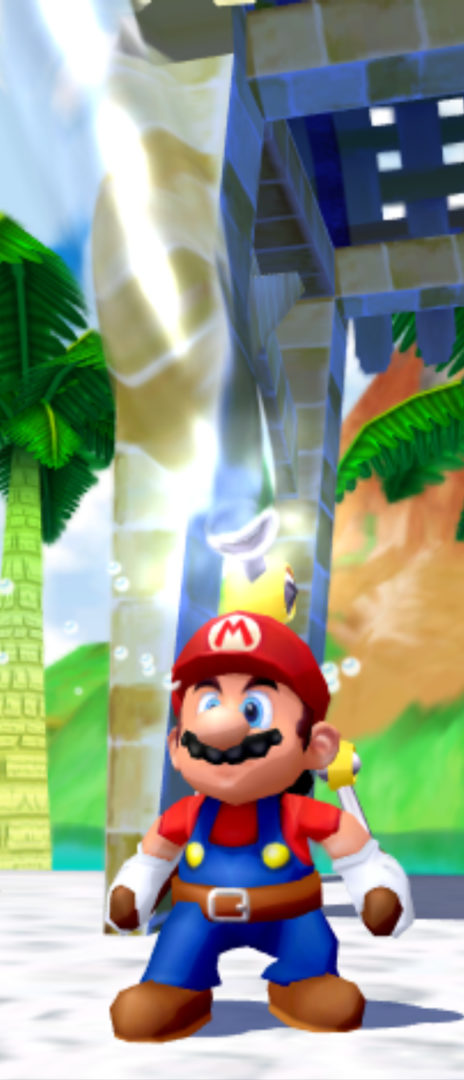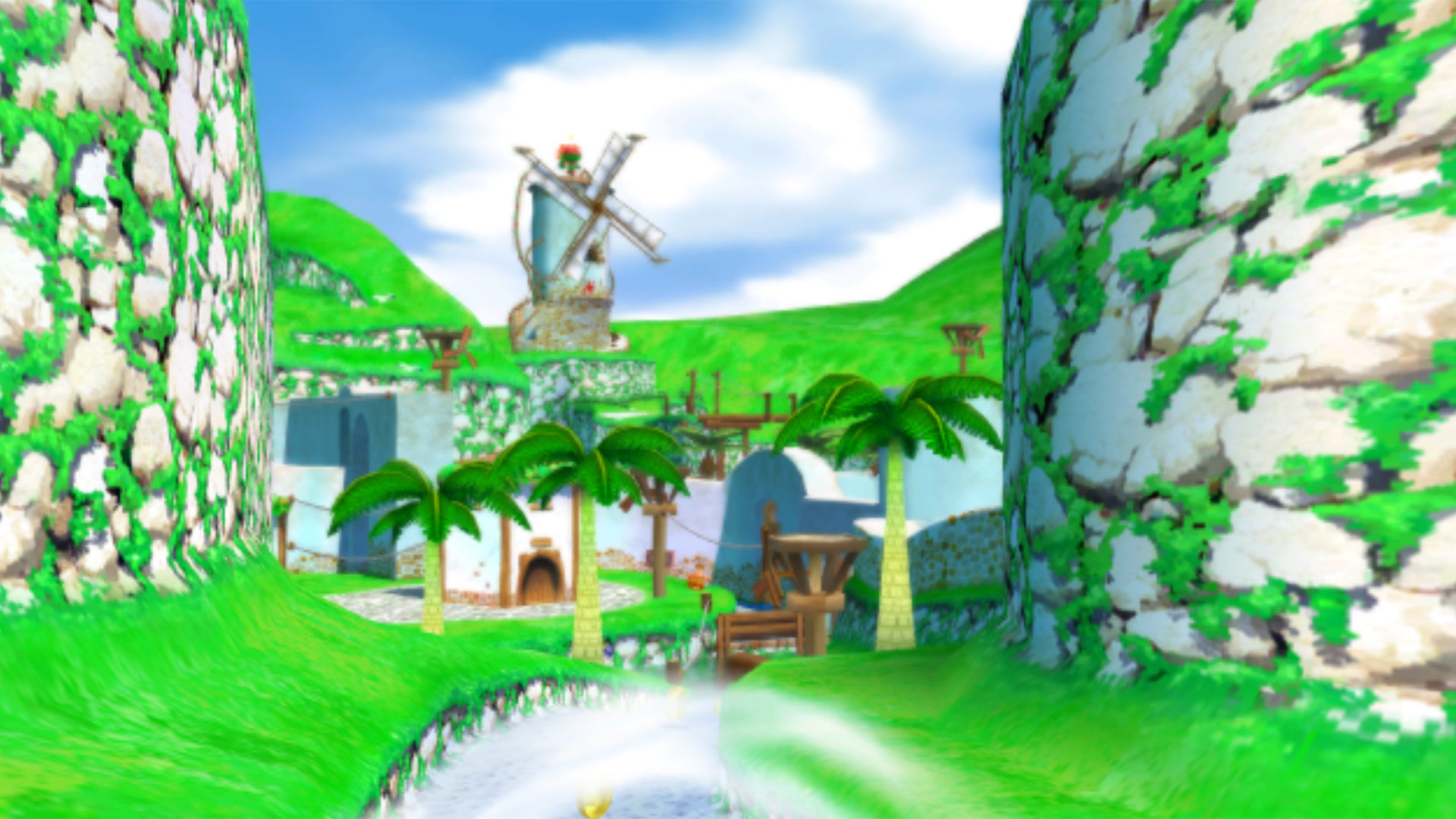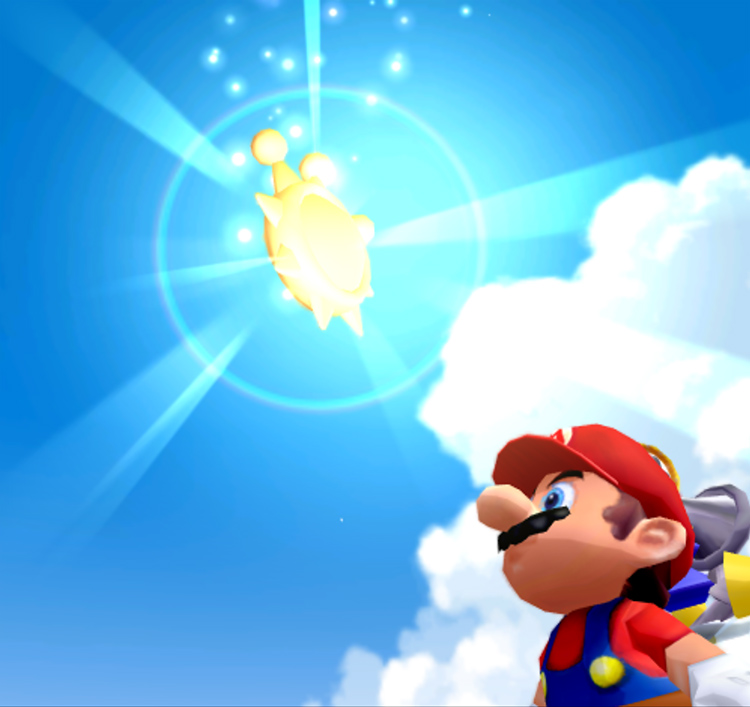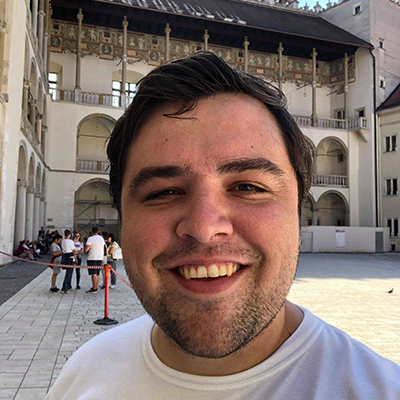When Yoshiaki Koizumi first presented his concept for what would become Super Mario Sunshine to Shigeru Miyamoto, he had one idea set in stone: Mario was going to have a water gun.
“I tried to imagine what Mario would be like on the Nintendo GameCube, and, from the very beginning, I let him have a water pistol,” Koizumi said in an interview ahead of Sunshine‘s release in 2002. “This is where I started. Then, I built upon that to imagine why Mario might have a water pistol; what kind of actions he would have.”

Super Mario Sunshine is the black sheep of classic 3D Mario platformers. The game sold well enough and garnered positive reviews upon release, but it’s never been held in the same light as Super Mario Galaxy or Super Mario Odyssey. But despite being overshadowed, Sunshine contains perhaps the purest example of Nintendo’s design philosophy, specifically that limitations—whether self-imposed or technological—can lead to focus and creativity.
Koizumi and the rest of the development team working on Super Mario Sunshine went through a number of ideas before creating the Flash Liquidizer Ultra Dousing Device, or FLUDD, for short. At one point, they had Yoshi as a nozzle cap shooting water. They even tried Mario spewing water out of his mouth. “It was the water pistol that came to my mind first,” Koizumi said. “The water pistol gameplay reminded me of summer and then I came to think about a tropical island. Isn’t it great to play with water on a hot island?”
That hot island would eventually become Isle Delfino, with its theme park, docks, haunted hotel rooms, and tropical beaches. It’s a prime example of creative limitation in use. Nintendo built the sunny 3D platformer from the ground up by limiting what Mario could do in order to build gameplay mechanics around a central idea. Everything in the game grew out of the water pistol, including its theme, individual levels, game mechanics, and ways to challenge the player. The restriction turned Super Mario Sunshine into a vibrant platformer that tried to be more than Super Mario 64. By contrast, Super Mario Galaxy and Odyssey were free-flowing adventures that included levels of all shapes, sizes, and themes. While still fun and innovative, they don’t create a cohesive experience that pushes you to explore their nooks and crannies.
Creative limitation, or the idea that constraints can breed more creativity than complete freedom, is common in game development, either by technical necessity or by choice. Minit‘s soundtrack, which is composed in minute long segments, and instantly readable level design came from the game’s central idea of a 60-second lifespan, for example. The indie team behind that game knew it wanted to limit itself to control the size and scope of the project. Koizumi’s approach to Super Mario Sunshine was similar. Developing for the GameCube no doubt presented some technical constraints, but the majority of his team’s limitations were self-imposed.
That’s the reason for one of Super Mario Sunshine’s primary strengths: its incredibly cohesive focus. Everything stems from the idea of the water pistol and branches out into the level and enemy design.

After Koizumi started with the water pistol, he built around it. The first thing created was the Isle Delfino tropical setting. They wanted to find a locale that could tie into the Mushroom Kingdom while also paying homage to Mario’s Italian heritage, so they based Delfino’s look on Amalfi Bay in Italy. (“Delfino” means “dolphin” in Italian, and the actual landmass itself is shaped like the aquatic mammal.) Meanwhile, Bianco Hills is a nod to rural Italy, while Sirena Beach feels a lot like Positano on the country’s coast.
By focusing on a Mediterranean aesthetic, every individual level, whether it be the ink-covered scaffolding of Ricco Harbor or the poisoned reefs of Noki Bay, comes together to create a consistent vision for Sunshine. You’re on a beach, and every new subworld (and every new level within subworlds) that you visit supports that idea. The best example is found in one of Super Mario Sunshine‘s most infamous sections, Sirena Beach.
On the surface, Sirena Beach’s haunted hotel seems like an easy replacement for the Boo-filled mansions of other Mario games, but its debut level proves otherwise. The first time you visit the luxurious locale, a giant, slow-moving, multicolored manta ray drifts onto the beach. You get a shot of 50 volts whenever you touch it or any of the mini duplicates that split off when you spray it. You use FLUDD to take out the creature, which is made up of moving ink that can’t handle a squirt from Professor E. Gadd’s invention. The creature’s design is odd, but it fits perfectly within the greater mold of Super Mario Sunshine. Its ghostly presence works within Sirena Beach’s tropical take on a haunted hotel, and its manta ray–inspired design swims right alongside the greater paradise setting of Isle Delfino. It’s something unexpected and expected at the same time.
The encounter also utilizes Mario’s freedom of movement as well as any level in the rest of the franchise. You can’t just run around spraying the creature—as it splits into smaller and smaller versions of itself, it’ll be too difficult to dodge. You need to use Mario’s jetpack hose to move, jump, hover, and attack at the same time, you need to move among the umbrellas and palm trees on the beach to avoid getting shocked, and you need to combine both tactics to get the most out of Mario’s moveset. It’s an openly designed level that gives you real freedom to determine your approach.

Other examples of innovative extensions of the world and FLUDD are Pinna Park’s on-rails segment, where you fight a giant mechanized Bowser controlled by Baby Bowser, and Ricco Harbor’s ascent through scaffolding. Pianta Village’s goopy inferno, where you have to navigate the world without your trusty aqua utensil, is a great way to subvert that design and test the player’s pure platforming abilities.
In these levels, Super Mario Sunshine proves it’s more than an extension of Super Mario 64. Nintendo didn’t want to settle for another dose of straightforward platforming. Koizumi, Miyamoto, and co. wanted to add a new element with FLUDD, and to build an entire game around it. Yes, the water-squirting is a bit imprecise, and the camera and control problems don’t help, but it’s easy to look past these shortcomings once you appreciate the inventiveness involved, and the jetpack and other late-game upgrades add a whole new dimension to making it through a tricky level.
Admittedly, Super Mario Galaxy and Super Mario Odyssey do represent a similar approach to game design, but the development teams of those games didn’t adhere to as strict a set of limitations as Koizumi did on Sunshine. Cappy’s possession mechanic in Odyssey and the gravity-bending of Galaxy don’t bleed into all aspects of their respective game’s level design.
In Odyssey, Cappy’s ability to let you seize control of another character, whether it be a lumbering T. rex or a small potted plot with incredible libido, makes for some fantastic platforming that you couldn’t find anywhere else. But almost all the enemy types in the game are design one-offs, created specifically for the moments when they appear, to serve a specific purpose rather than to give you freedom. Once you learn how to use the Jizo statue, Hammer Bro, or Cheap Cheap to navigate a very specific obstacle, you move on. The individual possession mechanics are rarely built upon further or used in less cookie-cutter ways. It’s enjoyable to jump out of Mario’s shoes for a puzzle, but Cappy’s capture ability is inherently restrictive in how it allows you to complete each level.
Neither Odyssey’s nor Galaxy’s self-imposed limitations seeps into the level design as deeply as those in Sunshine. Throughout Super Mario Odyssey you’ll pop into the Dark Souls–esque Ruined Kingdom, the Tim Burton–inspired Cap Kingdom, and the Japanese castle that Bowser has built for himself. Super Mario Galaxy has subworlds like the Toy Time Galaxy, with its planet-sized dinner plates and toys, and Honeyclimb Galaxy, with the adorable Mario bee suit, and the poisonous Bubble Breeze Galaxy. These subworlds are incredible platforming experiments, but they come and go as fast as Mario can circumnavigate an asteroid. They’re innovative on their own, but fall out of memory as soon as you get to the next engine in Rosalina’s ship. There is no central theme that creates a cohesive feeling from level to level.

It’s Koizumi’s approach, with its own creative limitations, that helped birth Super Mario Sunshine. Super Mario Odyssey and Galaxy aren’t bad experiences, but they lack the vision and depth of Sunshine.
It’s that vision that helps create a world that players want to explore. Isle Delfino and Peach’s Castle in Super Mario 64 served as an amazing playground for exploration and Delfino Plaza continued that trend. Neither Rosalina’s ship nor any area in Super Mario Odyssey serves as a central hub where you can experiment with and master his platforming moveset, which is key to building an attachment to the game.
“In each Mario game, players sometimes move around without any specific purpose, yet they may find some secret as a result. While wandering around, players get accustomed to the gameplay so that Mario moves just as they want him to,” Miyamoto said in that same 2002 interview. “Then gamers feel some attachment to the game and don’t want to sell it to used-software shops. So, the more you play, the more attachment you feel.”
All images: Nintendo

Aron Garst is a freelance journalist who covers games and esports for ESPN, Gamasutra, WIRED, Polygon, Kotaku, and plenty of other sites. He has an unhealthy obsession with battle royales and Animal Crossing.